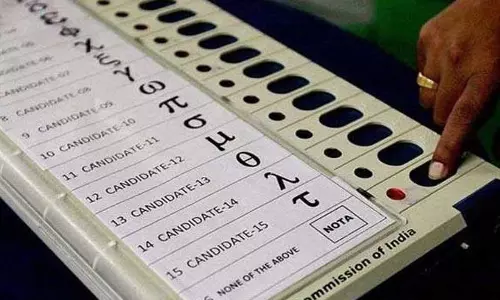
India's IDRSS to be satellite communication hub in sky
text_fieldsChennai: As part of its proposed manned space mission, India will launch the Indian Data Relay Satellite System (IDRSS) to improve data relay and communication links with its remote sensing/earth observation satellites, said a top official of the ISRO.
The two-satellite IDRSS will maintain continuous communication link with India's remote sensing/earth observation satellites and also with the Geosynchronous Satellite Launch Vehicle Mark III (GSLV Mk III) that would carry three Indian astronauts to the space in 2022.
"We are planning to launch two satellites under IDRSS. The first one is expected to be launched in 2019," K. Sivan, Chairman, Indian Space Research Organisation (ISRO), told IANS.
Officials told IANS that continuous communication link was important in the case of human space mission as the rocket carrying the Indian astronauts cannot be without a link.
Manned mission apart, IDRSS will maintain continuous communication link with Indian remote sensing/earth observation and other satellites in low earth orbit.
The two IDRSS satellites will be placed in geostationary orbit, enabling satellite to satellite communication and transfer data. The IDRSS satellites can see about 80 per cent of the area where Indian remote sensing satellites are orbiting.
The proposed system will also reduce the dependence on the ground stations in tracking satellites, an ISRO official told IANS.
India has the largest remote sensing satellite system orbiting in the space.
Further, the data capture and transfer capabilities of remote sensing satellites are increasing with newer technologies.
"India is launching many satellites -- nano, micro and small -- in the low earth orbit. Their monitoring is now done by the ground stations in India and outside. But monitoring of satellites by ground station has gaps. The visibility of Indian remote sensing satellites for ground stations is not more than 10-15 minutes and in some cases it is five minutes or less," an industry expert told IANS preferring anonymity.
There is also heavy reliance on ground stations in other countries, he added.
He said with IDRSS in place, the visibility range will go up for monitoring and communicating with earth observation satellites.
The other benefit is that the communication and data transfer could be in real time as the remote sensing satellites can relay the data gathered to IDRSS satellites which in turn can transmit them to the ground.
The expert said IDRSS will be like a hub as it can receive the commands from the ground stations and in turn relay the same to other satellites.
The IDRSS can also monitor a rocket from the time it lifts off from the launch pad.
Space faring nations like the US, China, Japan and Europe have such data relay satellite systems.
The IDRSS will also be of great use for India's strategic sectors as the data can be obtained on real time basis, another expert told IANS, preferring anonymity.
















